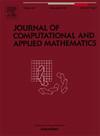Blind deconvolution via a tensor adaptive non-convex total variation prior
IF 2.1
2区 数学
Q1 MATHEMATICS, APPLIED
Journal of Computational and Applied Mathematics
Pub Date : 2025-01-20
DOI:10.1016/j.cam.2025.116511
引用次数: 0
Abstract
Blind image deconvolution is a challenging task that aims to recover sharp images from blurry ones without knowing the blur kernel. Deblurring color images is even more difficult due to three color channels. Existing deblurring methods typically tackle each channel separately, treating them as individual grayscale images and designing priors specifically for grayscale images. However, these methods need to consider the relationships between color channels, leading to the need for a more precise estimation of blur kernels. In this paper, we have observed that the total variations of the three color channels of an image exhibit low-rank characteristics, which can be effectively captured using the tensor decomposition framework. To incorporate this observation, we propose a novel prior for color image deblurring. Specifically, we define a new tensor product using an image-adaptive transform matrix and apply a non-convex function to the tensor singular values to create a novel tensor norm. Then, we present the new tensor adaptive non-convex total variation prior for image deblurring. Numerically, we develop an efficient deblurring algorithm based on the half-quadratic splitting scheme. We provide detailed solutions for each sub-problem. Experimental results demonstrate that our method accurately estimates blur kernels and produces fewer artifacts on several benchmark datasets.
求助全文
约1分钟内获得全文
求助全文
来源期刊
CiteScore
5.40
自引率
4.20%
发文量
437
审稿时长
3.0 months
期刊介绍:
The Journal of Computational and Applied Mathematics publishes original papers of high scientific value in all areas of computational and applied mathematics. The main interest of the Journal is in papers that describe and analyze new computational techniques for solving scientific or engineering problems. Also the improved analysis, including the effectiveness and applicability, of existing methods and algorithms is of importance. The computational efficiency (e.g. the convergence, stability, accuracy, ...) should be proved and illustrated by nontrivial numerical examples. Papers describing only variants of existing methods, without adding significant new computational properties are not of interest.
The audience consists of: applied mathematicians, numerical analysts, computational scientists and engineers.

 求助内容:
求助内容: 应助结果提醒方式:
应助结果提醒方式:


